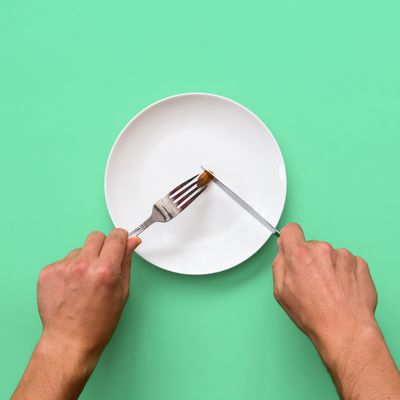
If ever you find yourself hosting a dinner party, here’s a simple trick to make sure your guests walk away happy, no cooking skills required: Make them wait a while before serving up the main event. Research has suggested that the longer you anticipate something, the more you’ll enjoy it, a finding that’s also been applied to food specifically — one 2013 study, for instance, found that people rate their meals more positively if they perform a small ritual before digging in. (It’s the reason why Instagramming your food can make it seem tastier.)
And recently, a pair of marketing researchers announced that they may have hit on a way to hack that waiting period, using it to steer people not only toward greater enjoyment but toward healthier choices, too. In a study recently published in the Journal of Marketing Research, the University of British Columbia’s Yann Cornil and INSEAD’s Pierre Chandon found that asking people to focus on the sensory pleasures of a food before eating it — thinking about the smell, taste, texture, and even the sound of a given food — can help them choose smaller portion sizes.
The two recruited roughly 1,000 French and American volunteers, both adults and children, for five experiments, asking some to look at pictures of indulgent snacks and others to view non-food-related images, like kids playing on a beach or in the snow. After looking at the photos, the subjects were instructed to cover their eyes and imagine all the ways they could use their other senses to interact with what they’d just seen. For those who saw the food, the authors wrote, that could mean “the sound made by the cereals when eaten, the sensation when chocolate melts in the mouth, the smell of the waffle, etc.” For the control group, it might mean the feeling of hot sand beneath their feet or the crunch of the snow.
The researchers then led their subjects to a table displaying six differently sized slices of chocolate cake, and asked them to pick a slice and rate how much they expected to enjoy it. Those who had mentally engaged with their food beforehand, they found, ended up choosing smaller slices and feeling more excited about their choices than the controls. (By contrast, a separate group of people who read health warnings about junk food before choosing a slice also went with smaller ones, but expected to enjoy their dessert less.)
The authors’ explanation: The sensory exercise reframed the act of eating as a means rather than an end, an experience rather than a way of satiating their appetites — and the experience hit its peak after just a couple bites. “While most food ads, especially those for fast food restaurants, suggest that consuming more food will bring more pleasure,” they wrote, “research on the physiology of eating suggests the exact opposite: Sensory pleasure peaks at the first few mouthfuls and declines with each additional mouthful.” Maybe the ideal strategy, next time you’re cooking for someone else, is to just dole out the food a few bites at a time.




